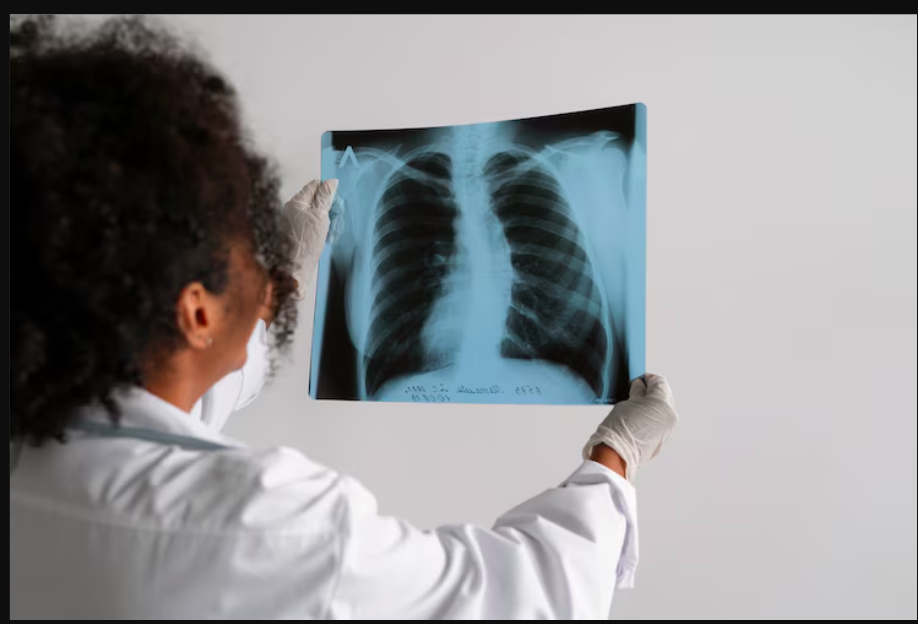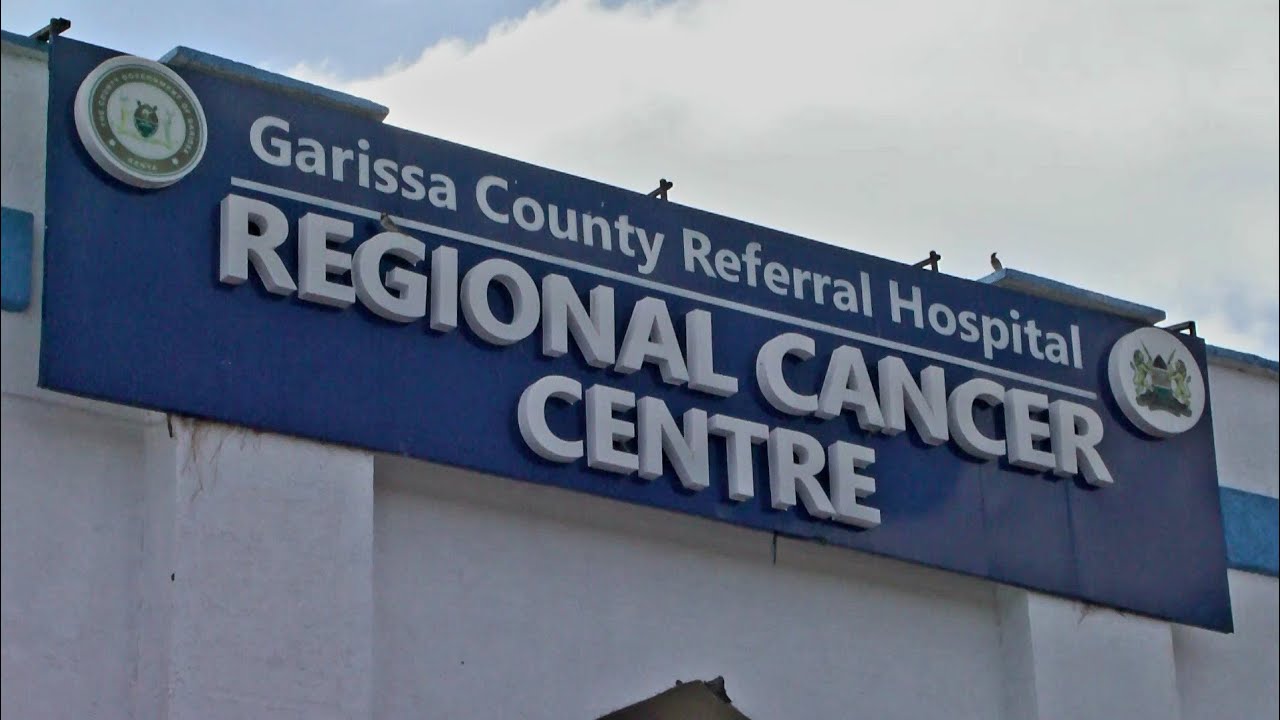 A radiographer looks at an image of a patient with suspected oesophageal cancer. Researchers and clinicians are racing to explain why EC cancer is growing in northeastern Kenya.
A radiographer looks at an image of a patient with suspected oesophageal cancer. Researchers and clinicians are racing to explain why EC cancer is growing in northeastern Kenya.Yuusuf, a 42-year-old shopkeeper in Wajir town, recalls the first sign something was wrong: a persistent difficulty in swallowing.
What he didn't know then was that he, like a growing number of ethnic Somali Kenyans, was on the long, painful road of battling cancer of the oesophagus, the tube that runs from the throat to the stomach.
Last year, Dr Omar Abdihamid, a clinical oncologist and cancer researcher at Garissa Cancer Center, led a study that found oesophagus cancer (EC) was the most reported cancer among Kenyan Somalis in the northeastern region.
In contrast, the commonest cancers nationally affect the breast, cervix, oesophagus, prostate and colorectal respectively, according to the Status Of Cancer In Kenya Report 2022/2023.
A second study has now confirmed that oesophagus cancer is the leading type of cancer among ethnic Somalis in northern Kenya.
Most cases are reported in people with absolutely no history of smoking or alcohol use, the two key risk factors for this type of cancer.
The latest study, published
in ecancermedicalscience journal, reveals that EC is now the commonest
among cancer patients at Wajir County Referral Hospital (WCRH), making 44 per
cent of all cancer cases.
Authors of the new Wajir study said the increasing burden of cancer among the northern Kenyan communities is what prompted them to carry out this study.
“The present study found that the leading cancer at the WCRH was EC at 44 per cent, followed by cervical cancer (28 per cent), breast cancer (24 per cent) and prostate cancer (four per cent). The incidence of EC has been reported to be on the rise in northern Kenya.”
They also noted patients had as long as six years before they were diagnosed with cancer, mostly due to lack of awareness and poor access to cancer care.
EC has the lowest patient survival rate of all cancers in Kenya, according to the Kenya Mortality and Cause of Death Report 2012-2021.
Previously, unusually high rates of throat cancer were noted in the Rift Valley.
But what has caused the spike among the Somalis?
 The primary cancer centre in the entire northern Kenya is
the Garissa Regional Cancer Centre, launched in 2022.
The primary cancer centre in the entire northern Kenya is
the Garissa Regional Cancer Centre, launched in 2022.That is the question researchers and clinicians are racing to answer. Dr Omar Abdihamid, the Garissa-based oncologist, explains that existing national data points to multiple risk factors for EC in Kenya: a diet heavy in red meat, alcohol and tobacco use, poor nutrition, hot beverage consumption, environmental carcinogens, and even genetics.
He contributed to both the 2025 Wajir study and the 2024 Garissa study.
But those findings do not fully explain why ethnic Somali
communities in Kenya appear to be more affected.
“There are many theories,” he writes in a recent opinion, “but there is a paucity of epidemiological data in the Somali community on the causes and patterns of EC.”
He offers some possible factors: rampant use of miraa, poor diet and nutritional insufficiencies, unique patient geographical demographics, and poor health-seeking behaviors resulting from cancer-related stigma, among others.
He also notes the lack of diagnostic facilities, meaning that cases go unnoticed and therefore untreated for years.
The Wajir study backs this up. Only eight per cent of patients had ever undergone cancer screening, despite being aware of its existence. One of the most telling findings: despite having the symptoms, just four per cent of EC patients knew about the barium swallow test, a basic diagnostic tool for EC.
The primary cancer centre in the entire northern Kenya is the Garissa Regional Cancer Centre, launched in 2022.
Dr Abdihamid notes the upsurge could partly be explained by
the better diagnosis leading to a higher detection rate. “However, this
particular community's uniquely high disease burden requires further
epidemiological inquiry,” he says.
In 2020, a Somali cancer specialist at the University of Somalia Teaching Hospital, and Turkish doctors at Erdogan Hospital in Mogadishu, reported in the Cancer Management and Research journal that EC was also the most frequent cancer in Somalia.
Dr Abdihamid believes it is time for targeted research in
Kenya. “There is a need to build on these hypotheses of plausible causes
driving the colossal burden of esophageal cancer in Somali communities and
across the country. Tailored cancer epidemiological study in northern Kenya and
across the country is overdue.”
Such research could pave the way for precision cancer care and targeted public health strategies.
The Wajir study calls for urgent collaboration between
county hospitals and regional cancer centres, and investment in local cancer
care infrastructure, from diagnostics to community education.
Like Yuusuf, many patients from Wajir, Garissa and Mandera counties soon realise diagnosis is just the first hurdle.
“Most cancer cases are referred to nearby Garissa or Nairobi,” the Wajir study reports. But travel to Nairobi means a 680-kilometre journey, often unaffordable and physically punishing for late-stage patients.
The Wajir study is titled “Determinants of cancer care
pathways at Wajir County, Kenya: patient perspectives.”
The co-authors are Fatuma Affey, Dabo Galgalo, Grace Muira, Hussein Ali, and James Ndukui, all of Umma University; and Houda Abdourahman of Hopital De Balbala Cheiko in Djibouti.


![[PHOTOS] Ruto at Pope Francis' burial](/_next/image?url=https%3A%2F%2Fcdn.radioafrica.digital%2Fimage%2F2025%2F04%2F844cb891-abd4-4ee5-bc2d-2a0c21fa3983.jpeg&w=3840&q=100)






